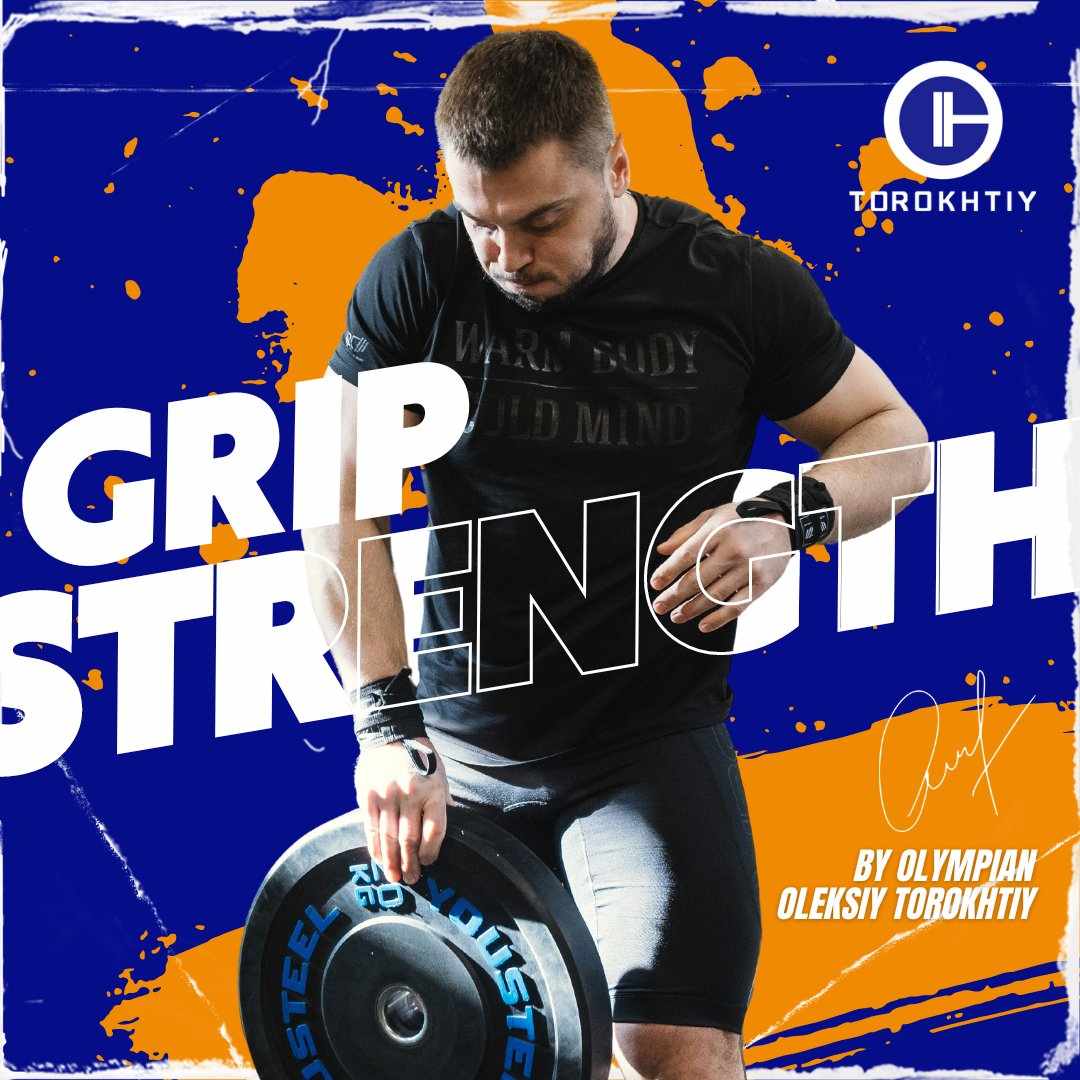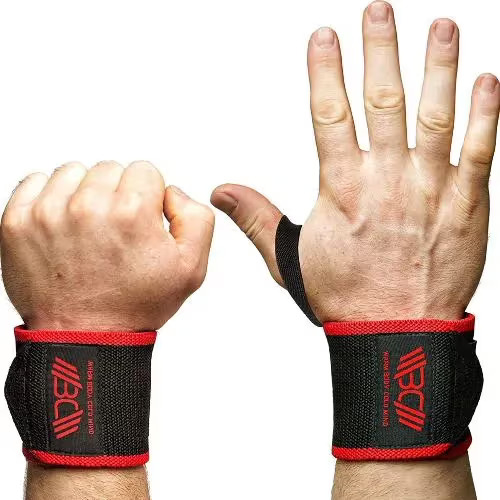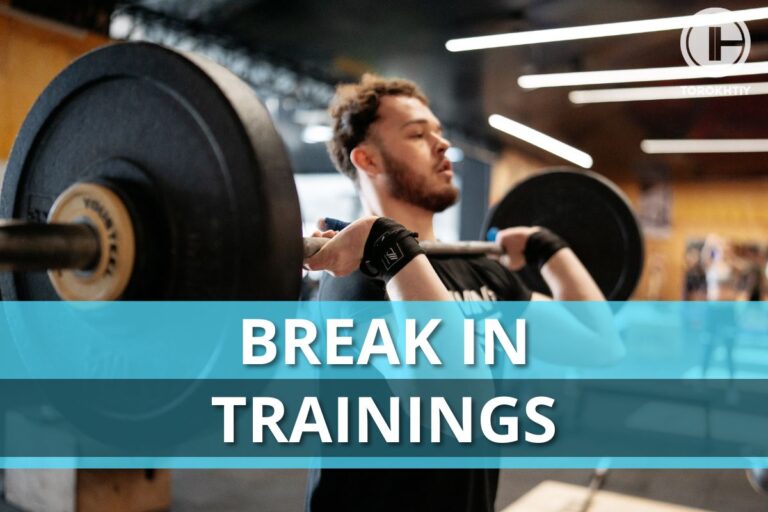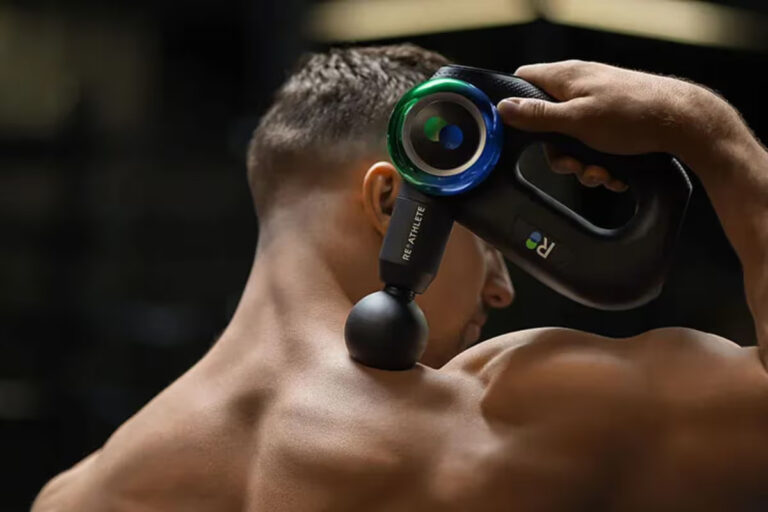Front Squat Wrist Pain: 7 Reasons & Solutions
Wrist pain during the front squat is fairly common among lifters, especially beginners who don’t have a good enough form yet, or whose muscles and joints aren’t that used to the weight that they’re trying to lift.
With that said, wrist pain during front squats can also occur in seasoned lifters for several reasons, which we will be exploring in this article. We will also discuss how you can prevent wrist pain from occurring in the first place.
And so, without further ado, let’s get started.
How Can You Treat Wrist Pain from Front Squat – You can minimize wrist pain from the front squat by ensuring that you’re performing the exercise with proper form, using not too much weight and progressing slowly. Additionally, when you start lifting heavy, getting a good pair of wrist wraps will further help protect your wrists and prevent injuries.
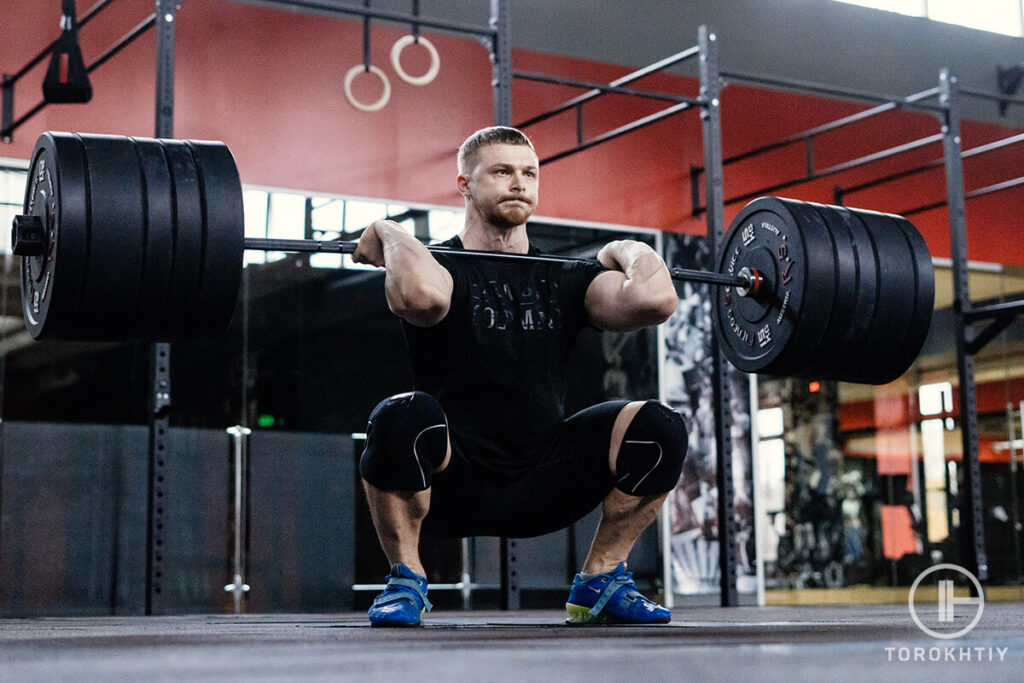
Why Does Your Wrist Hurt During Front Squat?
Your wrist may hurt during the front squat because of incorrect form. Unfortunately, front squats are one of the hardest exercises to perform correctly, and learning the proper technique can take quite a while.
That’s why we will talk about the seven most vital aspects of the front squat you should pay attention to in order to ensure you’re not injuring your wrists.
And please remember, this article is strictly informational, if you’re feeling serious pain in your wrists, you should immediately stop training and consult with a doctor.
1. Not Enough Wrist Mobility
If you lack the requisite wrist mobility, you may feel an intense stretch in your wrist when supporting the weight which could progress to pain or injury eventually. Unlike the back squat where the bar rests on your upper back, in the front squat, you need to have more wrist extension as the bar rests on your shoulders in front of your neck.
Each athlete can have a different front rack position and that is alright. It may be influenced by their body shape and size, goals, and possible injuries. The front rack requires a lot of mobility from the trunk and upper body.
In a good front rack position, your hands should be placed outside of the shoulders. The thoracic spine is in extension (upright), elbows are roughly as high as the shoulders, and the barbell should rest on the front of the shoulder.
In the front squat position, you should try to keep all fingers underneath the bar during front squats, and cleans. Since it requires more mobility to keep all fingers under the bar, you get front rack mobility work from simply doing front squats or front rack holds.
Fix your grip position: place your hands at about shoulder width and move them in or out, unracking the bar each time until you find the perfect position so that your wrists aren’t getting strained.
You can also stretch your triceps, too, as tight muscles can often lead to you being unable to lift your elbows high enough to the point where shoulders can support the bar.
Additionally, if you lack wrist flexibility, you can do front squats with crossed arms, or accessory exercises as goblet squats or DB front squats to get used to the front squat position. Hold a kettlebell or dumbbell underneath its one end and hold it at chest height.
Keeping your chest high, squat down by bending at the hip and knee until the comfortable depth. It allows you to do squats properly without straining your wrists.
2. The Weight You’re Trying To Squat is Too Heavy
If the weight is too heavy for you, the muscles in your forearm and hand are too compressed in the wrist area that isn’t used to such tension.
As a result, it can’t keep the wrist stable leading to injuries. Typically, people cannot squat in the front squat, the kind of weight they can lift in the back squat. And that’s to be expected as all the weight sits in front of you.
When learning the front squat, it’s a good idea to start with a weight you feel comfortable with and then not do the maximum reps that you can. Try to leave at least 1-2 reps in reserve in each set.
Over time, as you do the exercise more regularly, your wrists will get used to the weight; however, this doesn’t take one or two weeks, it is an ongoing process.
3. The Bar Is Not Placed on Your Shoulder
If you don’t place the bar correctly on your shoulder, that can cause wrist pain during the front squat. If you’re able to keep your elbows up and place the bar on your shoulder, that will help to take the weight off of the forearms and the wrists. If the weight is being supported by the arms and hands, this may irritate or injure the wrists.
As we already said, some people lack flexibility in the shoulder, which makes it difficult for them to keep their elbows up. In such cases, you should aim to perform the squat with a lower weight and work on shoulder mobility in the meantime.
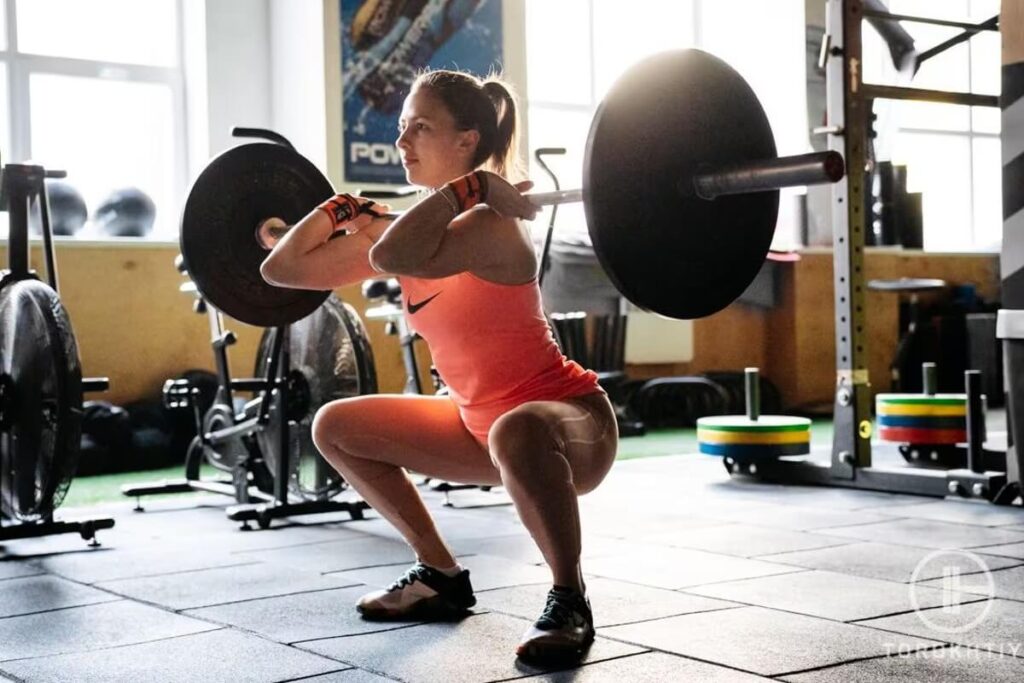
4. Not Placing All Fingers on The Barbell
Positioning your palms toward the ceiling is the most effective as it provides more stability with a great control over the bar. However, it requires enough mobility throughout your arms and can be painful on your wrists. You should use as full a grip as possible aiming to have all the fingers around the bar.
However, when the elbows start to go down, most people grab the barbell with their entire hand out of fear it will slip off. But gripping the barbell with your hand makes your wrist bear more of the load.
That’s why your mind should always be focused on keeping the elbows up, the barbell on the shoulders, and that only your fingers are holding onto the bar.
5. Not Holding Your Elbows Up
We’ve already mentioned this, but not having your elbows up when doing the front squat can lead to pain and injuries. However, in this paragraph, we will talk more about having your elbows up prior to lifting the bar off the rack.
If you’re not holding your elbows up before you unrack the weight, proper position setup is highly important because it will be difficult to adjust it afterwards.
🔻GRIP STRENGTH TRAINING PROGRAM
Struggling with Missed Lifts in Olympic Weightlifting?
Weak grips shouldn’t hinder your success.
Our specialized program, featuring 26 unique exercises and 18 workouts, focuses on strengthening essential hand muscles for Olympic weightlifters like you.
Don’t let your grip be the reason; start your journey to a stronger, more powerful lift today!
- 🌟 Targeted Grip Strengthening
- 🌐 Suitable for All Skill Levels
- 🔒 Lifetime Access – No Monthly Payments
Unleash your full potential. Click to transform your lifting game now!
6. Sitting Too Far Back
When you sit too far back during the front squat, it makes you lean forward too much. This is a mistake people often make, as, during the back squat, you tend to lean forward and sit back.
In the front squat you need to squat straight down, keeping your torso very upright with your knees likely traveling further forward. When it comes to your wrists, this sitting back and leaning forward forces the wrists to support the load directly.
How to Fix Wrist Pain While Front Squatting?
We already mentioned that wrist pain is common among lifters; however, thankfully, there are ways to prevent it from occurring. And that is exactly what we’re going to discuss below.
1. Fix Your Form
One of the most important factors to ensure you don’t get easily injured is always to do every movement with proper form. Front squats are a complex exercise, and it takes most beginners some time to learn how to perform it correctly.
That’s the reason why most often, people who complain that their wrists hurting from front squats are new lifters who have just started to incorporate this exercise into their programs and who still do it with some mistakes in the technique that lead to wrist pain.
2. Don’t Over-do the Weight
If you’re not 100% sure your form is good, you shouldn’t put too much weight on the bar. Often, lifters who still have some things to fix in their technique put on too much weight too quickly, and this can easily lead to wrist pain and even injuries.
That’s why, when learning new exercises, it’s vital to pace yourself with the weight – it’s normal not to be able to lift a lot at the start; in fact, it’s normal to start squatting only with the bar. And you should progress slowly by adding weight gradually.
That way, your tendons, ligaments, bones and muscle tissues will adapt and thus withstand the weight during future lifts.
3. Use Wrist Wraps
Even if you’re lifting a good weight and you have proper form, sometimes your wrists may still get uncomfortable, especially if you’re lifting heavy weights often. And that’s where wrist wraps come in handy.
They can help you support and stabilize your wrists, thus ensuring that you feel more comfortable while performing the exercise. Of course, it’s vital that you use wrist wraps that are durable, elastic, and feel comfortable.
Our recommendation is by Warm Body Cold Mind, and it’s their premium cotton wraps that are heavy-duty and allow you to get maximum support thanks to the thumb hole that they have. They’re also suitable for all kinds of lifters – powerlifters, Olympic weightlifters and fitness athletes, so you don’t have to worry about what sport you want to practice when purchasing them.
We Recommend: WARM BODY COLD MIND Weight Lifting Wrist Wraps
FAQ
Do Front Squats Mess up Your Wrists?
No, if you perform them with proper form. However, if you try doing heavy front squats with improper technique, then the chances of getting your wrists injured are high.
Is Front Squat or Back Squat Better?
Neither exercise is better than the other. They’re both great; however, they target same muscle groups with different emphasis. For example, back squats are great for building strength in the quads and glutes , while front squats work the glutes less, and upper back more.
Conclusion
When people ask us “how to front squat without hurting wrists,” we always say to start by learning the proper way to front squat and to be careful about how much weight you’re lifting. From then on, as you progress and you start lifting heavy, using wrist wraps is an additional way to support the wrists and ensure that they’re not hurting.
And so, what do you do to prevent your wrists from hurting when doing front squats? Share with us below in the comments section.
Also read:
Why Trust Us?
With over 20 years in Olympic Weightlifting, our team does its best to provide the audience with ultimate support and meet the needs and requirements of advanced athletes and professional lifters, as well as people who strive to open new opportunities and develop their physical capabilities with us.
By trusting the recommendations of our certified experts in coaching, nutrition, dietology, and sports training programming, as well as scientific consultants, and physiotherapists, we provide you with thorough, well-considered, and scientifically proven content. All the information given in the articles concerning workout programming, separate exercises, and athletic performance, in general, is based on verified data. We ensure that you can rely on our professionals’ pieces of advice and recommendations that can be treated as personalized ones which will benefit you and fully meet your needs.
The product testing process is described in more detail here
Author: David Sasha Schulz
Doctor of Chiropractic, BSc Human Biology, CSCS
Strength coach (CSCS) – 10 years
Sasha is a Chiropractor and Kinesiologist practicing in Kelowna, BC, Canada. He has been practicing Chiropractic since 2019, integrating manual therapy, strength training and programming principles, and nutritional strategies to get his patients optimal results. He currently scratches the competitive itch in fitness, and the occasional endurance race, and plays golf and snowboards for fun. He has an interest in all strength and fitness-related sports.

